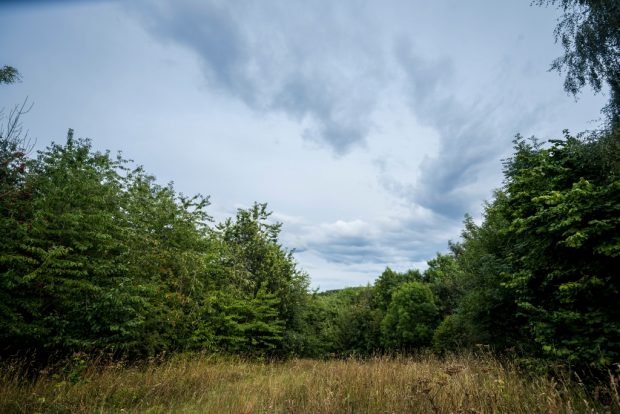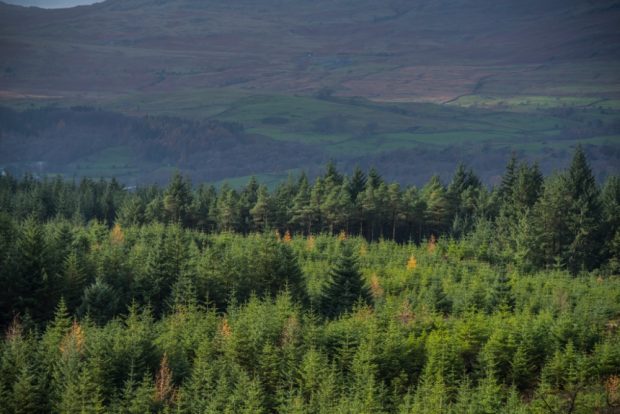
Over the past year there has been much discussion about the benefits of tree planting and the crucial role of woodland in the fight against climate change; indeed, the scale of planting was one of the discussion points raised during the 2019 general election campaign.
However, I’ve also come across questions and commentary about the impact that tree planting can have on existing environments, such as species rich grassland and peatland, and the wildlife it provides homes to, criticism that tree planting initiatives will only result in monoculture plantations and that productive forests have little role to play in the fight against climate change.
Sadly, few people outside those who work with woodlands know about the checks and balances surrounding forestry in the UK and if they do it’s unfortunately often discussed in the context of bureaucracy and red tape. The reality is that the UK is in the envious position of having a robust and widely welcomed forestry standard in place - the UK Forestry Standard (UKFS) - which the Forestry Commission is responsible for implementing in England.
It has been developed over the past 30 plus years as a direct response to the ‘Earth Summit’ in 1992. It was first published in 1998 and is now into its fourth edition. There are 41 legal requirements, 61 good practice requirements and 312 guideline bullets defining the UK’s approach to sustainable forest management in terms of biodiversity, water, soils, climate change, people, historic environment and landscape.
The UKFS is not just a tome that sits on the shelf – it’s a requirement for accessing forestry grants, for receiving a felling licence and for obtaining consent to plant a new woodland larger than two hectares in any landscape and for smaller woodlands in sensitive landscapes, under the Environmental Impact Assessment regulations.
The Forestry Commission assesses woodland creation proposals against the UKFS before giving approval and carrying out checks to ensure that woodland owners and managers comply with forestry regulations. Taken together, this robust regulatory framework prevents the establishment of monoculture plantations, trees being planted on deep peat or on valuable priority habitats and provides a high level of scrutiny to protect landscapes and the wider environment. In effect it’s a blueprint for the right tree in the right place for the right reason.

Turning to what is the right woodland to plant for addressing the huge challenge of the climate emergency – well the simple answer is all woodland, as long as it is UKFS compliant and has received regulatory consent; it’s also a strong argument for not diluting standards to accelerate planting. We need new native woodland, established either through planting or natural colonisation where we are confident it will succeed.
We also need mixed woodlands and productive forests to satisfy society’s demand for timber – bearing in mind we produce only 20% of the timber that we use in the UK; we are also going to need more intensively managed, but well-designed, short rotation forestry to provide a feedstock for the future bio-economy. If we do not produce sustainable timber in our own woodlands, it will come from elsewhere where our high environmental standards may not be upheld.
There has also been commentary that we should not be planting productive woodlands because so little of UK timber locks up carbon in the long term through its use in construction; this misses half the story of trees and carbon – product substitution. If wood is not used for pallets or fencing, what is the alternative? Steel, concrete and high density plastic, requiring large quantities of energy for their production and drawing on limited natural resources, rather than sustainably grown timber.
This is just a brief insight into sustainable forestry and how it is practised in England. With the government commitment to plant up to 30,000 hectares of trees per year, across the UK, by 2025, the UKFS will be more important than ever. It will ensure that the standards for the planning, design and sustainable management of forests and woodlands in the UK use an approach based on internationally recognised science and best practice, with the right tree, planted in the right place and for the right reasons.
4 comments
Comment by John Evans posted on
Spot on. The UKFS should be promoted far more.
Comment by Sue Peake posted on
Long live the forestry commission
Comment by Percept Consulting posted on
Thanks for sharing such an informative blog
https://www.perceptconsulting.com/
Comment by Tony Mitchell posted on
The need for trees to be planted has never been greater. The proper commercial choice softwood in correct environment is invaluable to the countries well being financially and for its population well being.